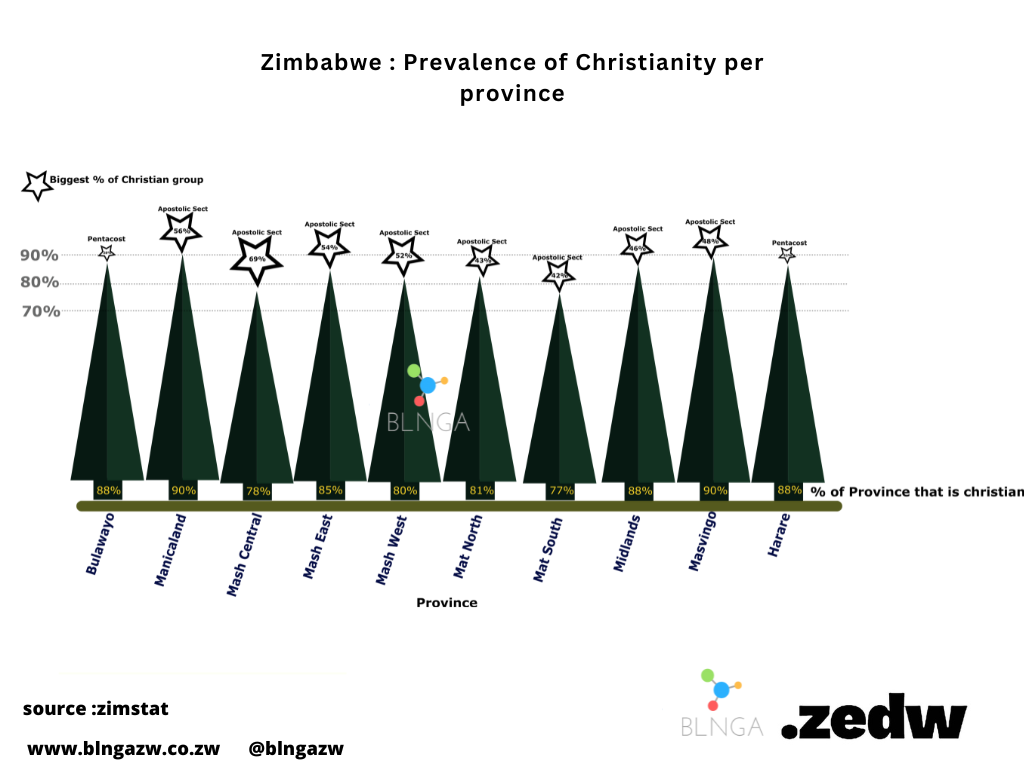This analysis of Zimbabwe’s bank lending data across sectors from 2019 to 2024 highlights strategic shifts in lending patterns likely influenced by Zimbabwe’s unique economic landscape, which has been shaped by inflation, currency instability, and changing market demands.
All Banks
In Dataset 1, representing all banks in Zimbabwe, there is a strong and consistent emphasis on agriculture, reflecting the sector's critical role in Zimbabwe's economy, where agriculture accounts for a significant portion of GDP and employment. However, the steady decline in agricultural lending from 31.69% in 2019 to 24.47% in 2022 could suggest growing challenges in agricultural finance, possibly due to drought, fluctuating commodity prices, or policy shifts encouraging diversification. Loans to individuals have fluctuated similarly, with a peak of 23.22% in 2021, indicating possible consumer demand for credit amidst inflationary pressures, before dropping to 18.6% in 2022 as inflation and economic uncertainty may have impacted lending to households. Notably, lending to financial organizations saw a steep decrease from 13.35% in 2020 to 5.41% in 2022, suggesting reduced credit appetite in the financial sector amid economic challenges.
Steward Bank
Steward Bank’s recent shifts in lending strategy from 2020 to 2024 reflect an adaptive approach to Zimbabwe's evolving economic landscape, with noticeable changes influenced by developments within its parent company, Cassava Technologies. Initially, the bank prioritized individual loans, peaking at 65% of its portfolio in 2022, likely responding to high consumer demand for personal credit amid inflationary pressures. However, by 2024, Steward Bank sharply reduced individual lending to 13% and redirected 65% of its portfolio to manufacturing. This pivot aligns with Zimbabwe’s national goals to boost local manufacturing and decrease import dependency, positioning Steward Bank as a supporter of industrial growth and economic resilience.
The loss of EcoCash, Zimbabwe's leading mobile money service, as a "stablemate" under Cassava Technologies following corporate restructuring, may also have influenced Steward Bank's strategic redirection. Without the competitive advantage of close integration with EcoCash, Steward Bank likely faced challenges in reaching individual consumers as effectively as before. This may explain its pivot toward manufacturing and corporate lending, allowing Steward Bank to diversify its portfolio and align with Cassava’s broader emphasis on technology and industrial sectors. This reorientation not only meets current economic demands but also strategically positions Steward Bank to support Zimbabwe’s long-term industrial development goals.
AgriBank
The Agribank loan allocation trends from 2018 to 2023 reveal a strong focus on agriculture, with funding for this sector rising from 35% in 2018 to a peak of 57.8% in 2020, driven by drought and food security concerns. Loans to individuals began high at 51% in 2018 but decreased to 32.38% by 2023 as attention returned to agriculture. The manufacturing sector maintained a relatively stable share, while sectors like communication, construction, and transport received minimal allocations. Notably, services, mining, and distribution saw increased funding in recent years, with 8.88%, 7.36%, and 8.36% respectively in 2022, potentially signaling Agribank’s growing emphasis on these areas. Overall, the data highlights Agribank's adaptive lending strategies, balancing a strong commitment to agriculture with gradual diversification into other key sectors.
CBZ
CBZ's lending portfolio from 2018 to 2023 reveals a dynamic shift in sectoral focus aligned with Zimbabwe's evolving economic needs. Initially, loans to individuals were prominent at 28.7% in 2018 but saw a marked decline in 2019 to just 5.58%, reflecting CBZ's pivot toward rural financing, especially for agriculture, which surged to 68.81% that year. This shift likely supported the government’s efforts to revitalize agriculture and rural economies amid ongoing food security challenges. The mining sector also gained prominence, rising to 10.08% in 2020 and again in 2022, aligning with Zimbabwe's push to boost mining exports and investment in mineral resources. Manufacturing and distribution maintained stable shares, underscoring their steady role in the economy, while sectors like construction, transport, and financial organizations received relatively smaller allocations. Communication funding, initially minimal, increased to 4.24% by 2023, reflecting the growing importance of digital connectivity. The services sector saw fluctuations, peaking in 2021 at 8.76%, likely due to rising demand for service-oriented financing. Overall, CBZ’s lending strategy shows adaptability, with increased focus on agriculture, mining, and manufacturing, supporting the country’s key economic drivers and responding to sectoral opportunities.

